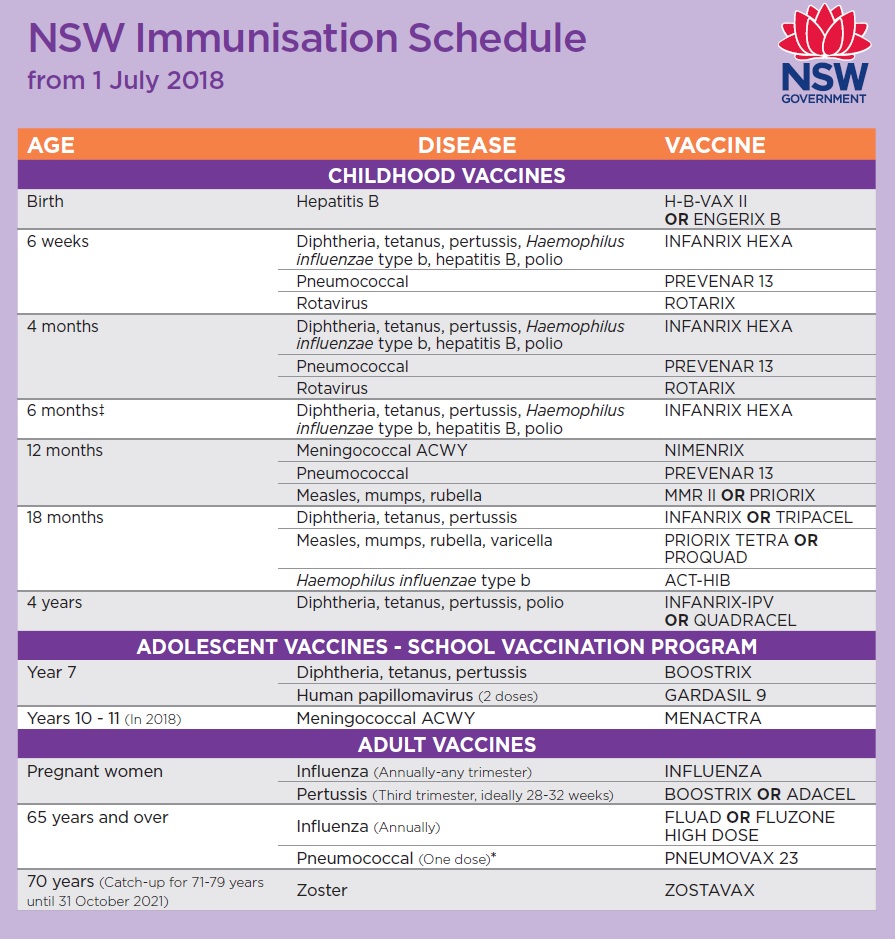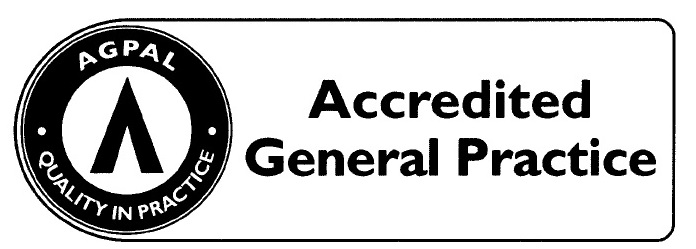Childhood Immunisation (NSW)

Changes from 1 August 2018
Pneumococcal (Prevenar 13): The third dose of pneumococcal vaccine (previously provided at 6 months) will now be given at 12 months of age. The first and second doses of pneumococcal vaccine will continue to be given at 6 weeks and 4 months (two dose primary course) followed by a booster dose at 12 months of age. Children with medical conditions associated with an increased risk of invasive pneumococcal disease (IPD) will still receive an additional dose of Prevenar 13 at 6 month of age; that is, they will continue to have a three dose primary course followed by a booster at 12 months of age.
Meningococcal ACWY (Nimenrix): Previously children received a combined meningococcal C-Hib vaccine (Menitorix) at 12 months. From 1 July 2018 children will receive a new meningococcal vaccine (Nimenrix) at 12 months of age that protects against 4 serogroups including A, C, W and Y.
Haemophilus influenzae type b (Act-HIB): Children will now receive their fourth dose of Haemophilus influenzae type b (Hib) vaccine as a monovalent vaccine (Act-HIB) at 18 months of age (no longer combined with meningococcal C at 12 months). They will continue to receive their Hib primary schedule doses at 6 weeks, 4 months and 6 months (Infanrix Hexa).
Pertussis (Boostrix or Adacel): Pertussis (whooping cough) vaccine has previously been provided free of charge on the NSW Immunisation Schedule to all pregnant women in their third trimester. From 1 July 2018 this vaccine will continue to be provided for pregnant women in their third trimester but will be funded by the National Immunisation Program (NIP).
Index of general public information |

























